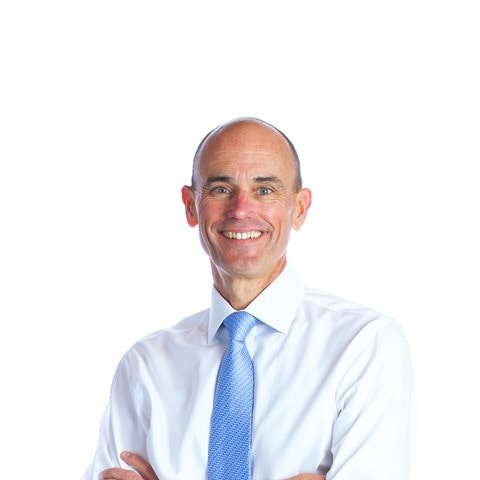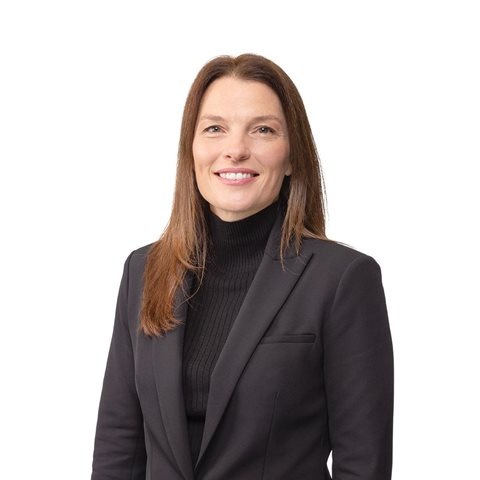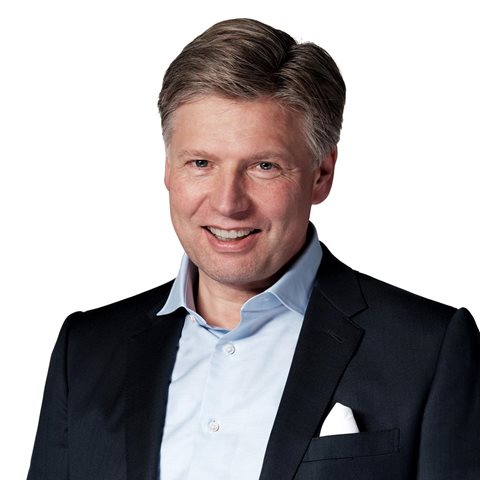As the world economy starts to emerge from the COVID-19 crisis, the time will soon come for leaders to look beyond safeguarding lives and livelihoods and to set their sights on a more profound challenge: bettering them. This societal challenge might be ten times as big as the pandemic and last ten times as long. The three goals we have in mind—growth, sustainability, and inclusion—buttress one another yet don’t always pull in the same direction; we see powerful reinforcing as well as counteracting loops among them (exhibit). And so, while many might broadly agree on the aspiration, there’s a very tough question lurking in the background: How do we go about building a future that delivers growth and sustainability and inclusion?

Full disclosure: we’re not going to offer an answer. Instead, we propose a way for changemakers in business, government, and society to explore the problem, a mental model that might offer the best chance to reach the answer. It starts with this: we believe the ands are crucial and that they are in fact the means to the end. The three elements of growth, sustainability, and inclusion are deeply connected and cannot be viewed as trade-offs. Consider this: without growth, how could we achieve prosperity and well-being or pay for the transitions needed to make the economy more sustainable and inclusive? Without sustainability, how could we fashion growth for the current generation and the ones to follow? Without inclusion—an opportunity for productive work and a satisfying life for all citizens—how could we ensure the demand needed to propel growth? Indeed, getting to and—moving to a world in which growth and sustainability and inclusion form a powerful dynamic—is the imperative for the next era of business.
But before we get to the challenge of and, let’s face facts: hastening growth, sustainability, and inclusion are incredibly difficult challenges in their own right. Fortunately, thinkers, strategists, activists, and many others around the world—dreamers and doers—are working on it. We are too. In our view, the world will need to confront three problems simultaneously:
- Growth is elusive. In the mature G-7 economies, GDP growth has halved to 1 percent per year on average since the 2008 global financial crisis.1 It’s the same story in emerging economies: despite some exceptions, such as China and India, growth in emerging economies overall has been lower recently than in the early 2000s.
- Poverty is still endemic, despite the progress made. More than 600 million people still lived in extreme poverty as of 2017. And in 2020, another 100 million or so people joined them as a result of the COVID-19 pandemic. This will persist unless today’s leaders create sufficient jobs with decent wages, as well as a robust social contract that ensures access to affordable housing, healthcare, and energy for the bottom one to three quintiles of the population, depending on the country. Meanwhile, a new threat to personal income is mounting: the rise of technology-driven changes in the ways we work, which the pandemic has accelerated. We estimate that more than 100 million people will need to make occupational transitions by 2030 in a set of eight advanced and emerging economies.
- Ensuring a sustainable future will require massive investment. For example, the International Energy Agency estimates that net-zero emissions might require investments of almost $5 trillion each year by 2030, and $4.5 trillion per year by 2050.2 The annual bill equates to about half of global corporate profits in 2019, or about one and a half times the annual increase in public debt over the preceding 15 years. Additional investments needed for decarbonization in agriculture, transportation, and other sectors could nearly double the bill. While many of these investments would produce a return, their financing or pricing is not yet set up.
And that’s just the start: as we explain in this article, even if the global economy were to get these three goals notionally right, there are contingencies among them that, if left unresolved, could wreck any progress made.
Here, we seek to frame the debate about achieving sustainable, inclusive growth in a clear-eyed way, laying out the aspiration but also the toughest problems that need to be solved to achieve this growth, with some illustrations as to their size. Good strategy should always start with asking the right questions. For today’s leaders, the questions are vast and profound—and soluble.
Good strategy should always start with asking the right questions. For today’s leaders, the questions are vast, profound—and soluble.
The virtuous cycle starts with growth
What do we mean by sustainable, inclusive growth? There are many ideas associated with these words. We aim for broad rather than narrow interpretations:
- In growth, we include the ambition of increased prosperity and well-being, including economic-profit growth for companies, GDP growth for nations—as well as measures such as life satisfaction for citizens—derived in part from dignity of work (while recognizing that measurable definitions of well-being are still evolving).
- In inclusion, we consider equality of opportunity and broad-based progress of outcomes for all—especially sufficiency of living standards—and the narrowing of inequalities among genders, ages, ethnicities, family backgrounds, and places of residence.
- In sustainability, we aim for environmental resilience, which starts with reducing climate risk but also includes much broader preservation of natural capital as well as intergenerational fairness, all considered in terms of economic and societal costs and benefits.
These three goals are daunting. Fortunately, they can strengthen and reinforce one another:
- Growth supports inclusion, part 1: Creating meaningful jobs and lifting incomes. High-growth emerging economies have delivered powerful proof that growth supports inclusion, by reducing the global share of those living in extreme poverty by two-thirds—to less than 10 percent of the world’s population—and by welcoming hundreds of millions to the middle class. This applies in advanced economies too: from the early 1990s to 2005, before the global financial crisis, GDP per capita rose by 2 to 4 percent per year and real median household market incomes also rose.
- Growth supports inclusion, part 2: Correcting labor-market inadequacies. In growing economies, government transfers and tax policies can help support incomes for large swaths of the population. Research from the McKinsey Global Institute found that real market incomes were flat or fell for just 20 to 25 percent of households, after taxes and transfers; before these transfers, some 60 to 70 percent of households saw incomes decline. During the pandemic, while US median household income dropped 2.9 percent in 2020, the share of people living in poverty declined, after accounting for government aid.3
- Growth enables sustainability by encouraging investment. Economic growth strengthens consumer confidence, spending, and demand, all vital elements of a healthy investment climate—which the energy transition is going to need. And as our research on outperforming emerging economies has shown, the capital deepening that results from greater investment spurs productivity and, with it, wages and growth.
- Greater inclusion and sustainability promote growth through new demand and investment opportunities. Sustainability drives new business opportunities in domains such as clean technologies. India, for example, could more than quadruple its renewable-energy capacity by 2030; we estimate that this could generate some $90 billion in GDP and support about two million jobs in 2030. And inclusion has similarly powerful effects on growth. We estimate that more inclusive access to healthcare could add 0.4 percent to the world’s GDP growth by 2040. More broadly, inclusion spurs demand, as a burgeoning middle class is a key driver of consumption. Africa has about 200 million young people of working age and will have close to a billion by 2050. Youth training and development, especially of digital skills, can vault this group into the middle class—and help close skill gaps in the rest of the world.
- Sustainability reinforces both inclusion and growth through the ‘energy prize.’ The energy transition will yield a prize of two cross-cutting benefits: lower costs that make energy more accessible, and more productive lives. Over the past ten years, the cost of electricity from renewables fell about 50 to 85 percent.4 Renewables are now gaining ground in developing economies. In sub-Saharan Africa, a region with the lowest energy-access rate in the world, decentralized renewable solutions such as rooftop solar are taking root.5 Lower emissions and reduced air pollution can improve health and allow more people to participate productively in the economy. History has some instructive lessons: after passage of the Clean Air Act in the United States, in 1970, reduced pollution increased the labor-force participation rate for affected individuals and had a positive long-run impact on wages.6
These three goals—sustainability, inclusion, growth—are daunting. Fortunately they can strengthen and reinforce each other.
Squaring the circle
If only each element of the circle of sustainable, inclusive growth created purely positive reinforcements to the others, the way forward would be clear. But the reality is that sustainability, inclusion, and growth also counteract. Squaring this circle means combating three sets of potential counterforces, which could be just as powerful as the reinforcing loops.

Watch
A McKinsey Live event on 'Charting a sustainable, inclusive, and growing future'
Growth’s counteractions
Growth imposes two major challenges. First is the persistent rise in inequality, which could worsen with growth. Already, 70 percent of the global population live in countries where inequality is mounting. Second is rising resource consumption and emissions.
- Growth affects inclusion through skill-biased inequality—and its magnitude is set to rise with trends accelerated by the COVID-19 pandemic. Growth in the knowledge-based economy has stoked demand for higher-level cognitive, technological, and socioemotional skills— a demand not matched by the supply of workers with such skills. As a result, a skill-biased inequality in many countries has sprung up. In the United States, for example, wages for middle-income jobs grew by 1.1 percent between 2000 and 2018, whereas wages for high-pay and low-pay workers grew much faster, at 7.3 and 5.3 percent, respectively. As the pandemic accelerates digitization and automation, almost all growth in labor demand could occur in high-wage occupations. The number of workers who would need to make occupational transitions by 2030 in order to stay employed would increase by up to 25 percent, including—for the first time—many low-wage workers.
- Growth counteracts sustainability through greater resource consumption. The global “material footprint”—that is, the raw materials used to make the goods that we consume—rises in correlation with GDP growth.7 As growth expands in emerging countries, the problem of an increasing global material footprint could get worse. According to the World Bank, about 10 percent of the world’s people still have no access to electricity, and 2.6 billion people lack access to clean cooking solutions.8 If increased demand from a globally expanding consuming class is not accompanied by improvements in resource efficiency, this will put an even heavier burden on the planet.
Sustainability’s counteractions
Trillions in capital are needed for energy investment to achieve the goal of net-zero emissions by 2050. If consumers and businesses shoulder the burden, near-term growth and inclusion could suffer, even though the longer-term benefits are clear. If costs are passed on to consumers, energy prices could rise well before the gains are eventually reaped, and if costs are passed on to businesses, the profitability of whole sectors could suffer.
This dynamic sets up the potential for two counteractions: uneven distribution of impact and a challenge to the goal of inclusion.
- The energy transition could affect some countries and sectors severely. Oil- and natural-gas-producing economies could see their annual per capita income from these products fall by about 75 percent by the 2030s, according to the International Energy Agency.9 Lower-income countries will be disproportionately exposed because they have a higher share of emissions-intensive sectors and will also need to make higher investments relative to their GDP. Those sectors include power, automotive, construction, and others, all of which will be intensely affected, as will supply chains.
- Lower-income households are disproportionately vulnerable. In Europe, recent rises in energy prices—the vanguard of the energy transition—are falling heavily on low-income households, prompting some governments, including in Spain, to provide subsidies.10 And while the transition could lead to some 18 million more jobs in the green economy, according to International Labour Organization estimates, many people, especially lower-income workers, will need to retrain to qualify for these new jobs.11
Inclusion’s potential counteractions
The positive spillovers of inclusion are indisputable and well documented: greater workforce participation, higher creativity, more capital allocated to children’s needs. However, poorly conceived measures to boost inclusion can have unintended negative consequences that can include distorted product markets, reduced investment, or faster environmental depletion. For example, in developing economies, free or highly subsidized nonvolumetric pricing of electricity used to pump water can lead to groundwater depletion.12 Efforts to achieve equality can also backfire if they become a box-ticking exercise, or a quota-driven program, which may fail to address the root causes of inequality. As a result, the goal of achieving a fairer workplace or society may not be achieved, and outcomes may even worsen for certain groups.
As in the pandemic, we will need multiple experiments, unprecedented speed in scaling successful ones, and broad participation across actors.
Starting here, starting now: A proposal
Achieving a future that is sustainable and inclusive and growing is so compelling an idea that today’s leaders owe it to future generations to act immediately. Such a feat cannot be left to enlightened self-interest: if it were that easy, the problem would already have been solved. We see six key challenges that will need to be tackled—with success or failure hinging on how effectively these challenges are met.
- How to unlock growth supported by higher productivity of an additional 1.0 to 1.5 percentage points of GDP per year, at a global scale with the same urgency that we have seen during the COVID-19 pandemic?
- How to reduce the transition costs of decarbonization by, say, $500 billion to $1 trillion of the $5 trillion in required spending per year through technological innovation and smart-portfolio choices?
- How to finance and smooth the cost of the energy transition, country by country and sector by sector, in a way that won’t stifle growth?
- How to reskill and re-employ more than 100 million workers who are in stagnating or shrinking occupations as a result of technological change, including the many millions who will likely be displaced by energy transitions?
- How to strengthen the social contract by achieving basic needs for median households, including affordable housing, healthcare, and energy—needs that are unmet for many of these families in both advanced and developing countries—in a way that attracts private-sector innovation and supply?
- How to support the most vulnerable population segments—for example, the poorest one-fifth of the global population—that struggle with access and affordability in areas such as nutrition, water, energy, education, and financial capital?
Answering these six questions would negate the counterforces mentioned earlier and allow the virtuous cycle to flow unimpeded. But important obstacles, linked to incentives, stand in the way. First is what Mark Carney has called “the tragedy of horizons”: today’s leaders collectively need to take action today for returns that will accrue only over time.13 Second is the tragedy of the commons: for collective action, especially on environmental sustainability, all invested parties must look past their parochial interests and fight for the common good.
No stakeholder can solve all these problems on their own. A clear road map, with buy-in from others, is paramount, as is a framework of incentives that balance short- and long-term horizons and interests across value-chain elements, economic sectors, countries, and regions. As in the case of the pandemic, tackling these challenges successfully will require multiple experiments, unprecedented speed in scaling successful ones, and broad participation across actors.
Governments will need to orchestrate a resilient transition—to manage risks, smooth costs, and avoid cascading crises in response to actions taken. On the business side, more companies and CEOs will need to enter the arena, to engage deeply in the design of policies, and to contribute their market knowledge. They will need to be open and realistic about the challenges, while also setting ambitious goals to create positive impact for their customers, workforces, societies, and the environment. Their capacity for innovation can and must be harnessed to shift the frontier of what’s possible and to help achieve what may seem unachievable. If companies don’t engage well and honestly, younger generations of workers will hold them accountable.
When it comes to achieving sustainable, inclusive growth, it is crucial first to fully recognize both the reinforcing as well as the counteracting loops. Then the conversation must move from agreeing on the targets—for who would not agree to such a tantalizing vision—to understanding how to solve the tough problems that stand in the way.
For our part, we have put our hypotheses on those problems at the top of our research agenda and look to learn even more from the leaders of the global organizations we work with who are “making a dent in the universe” through sustainable, inclusive growth. We hope that the ways in which we’ve sketched out the forces and counterforces here contributes to our collective understanding. With that, it may be possible to start to move toward a sustainable and inclusive and growing global economy.
If we don’t focus on the and, we won’t achieve the end.






